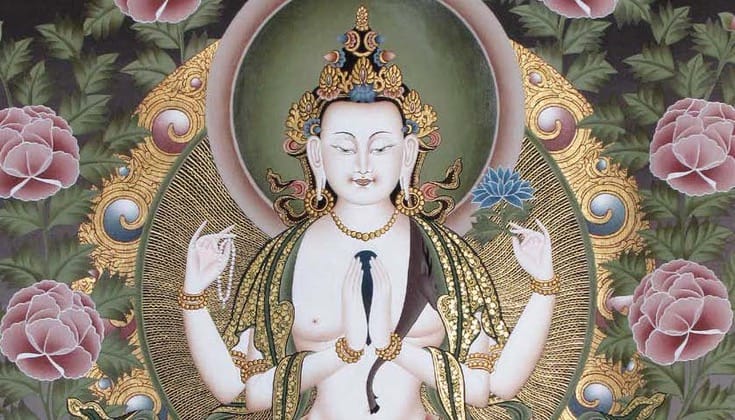In order to have compassion for others, we have to have compassion for ourselves. In particular, to care about other people who are fearful, angry, jealous, overpowered by addictions of all kinds, arrogant, proud, miserly, selfish — you name it — means to not run from the pain of finding these things in ourselves. In fact, one’s whole attitude toward pain can change. Instead of fending it off and hiding from it, one can open one’s heart and allow oneself to feel that pain, feel it as something that will soften and purify us and make us far more loving and kind.
The tonglen practice is a method for connecting with suffering — ours and that which is all around us — everywhere we go. It is a method for overcoming fear of suffering and for dissolving the tightness of our heart. Primarily it is a method for awakening the compassion that is inherent in all of us, no matter how cruel or cold we might seem to be.
As you do this practice over time, your compassion expands naturally.
We begin the practice by taking on the suffering of a person we know to be hurting and whom we wish to help. For instance, if you know of a child who is being hurt, you breathe in the wish to take away all the pain and fear of that child. Then, as you breathe out, you send the child happiness, joy, or whatever would relieve their pain. This is the core of the practice: breathing in another’s pain so they can be well and have more space to relax and open, and breathing out, sending them relaxation or whatever you feel would bring them relief and happiness.
However, we often cannot do this practice because we come face to face with our own fear, our own resistance, anger, or whatever our personal pain, our personal stuckness, happens to be at that moment.
At that point you can change the focus and begin to do tonglen for what you are feeling and for millions of others just like you who at that very moment are feeling exactly the same stuckness and misery. Maybe you are able to name your pain. You recognize it clearly as terror or revulsion or anger or wanting to get revenge. So you breathe in for all the people who are caught with that same emotion and you send out relief or whatever opens up the space for you and all those countless others. Maybe you can’t name what you’re feeling. But you can feel it — a tightness in the stomach, a heavy darkness, or whatever. Just contact what you are feeling and breathe, taking it in for all of us and sending out relief to all of us.
Tonglen can be done for those who are ill, those who are dying or have just died, or for those who are in pain of any kind.
People often say this practice goes against the grain of how we usually hold ourselves together. Truthfully, this practice does go against the grain of wanting things on our own terms, of wanting it to work out for ourselves no matter what happens to the others. The practice dissolves the armor of self-protection we’ve tried so hard to create around ourselves. In Buddhist language one would say that it dissolves the fixation and clinging of ego.
Tonglen reverses the usual logic of avoiding suffering and seeking pleasure, and in the process we become liberated from a very ancient prison of selfishness. We begin to feel love both for ourselves and for others, and we begin to take care of ourselves and others. It awakens our compassion and it also introduces us to a far larger view of reality. It introduces us to the unlimited spaciousness that Buddhists call shunyata. By doing the practice, we begin to connect with the open dimension of our being. At first we experience this as things not being such a big deal or so solid as they seemed before.
Tonglen can be done for those who are ill, those who are dying or have just died, or for those who are in pain of any kind. It can be done either as a formal meditation practice or right on the spot at any time. For example, if you are out walking and you see someone in pain — right on the spot you can begin to breathe in their pain and send out relief.
Or, more likely, you might see someone in pain and look away because it brings up your fear or anger; it brings up your resistance and confusion. So on the spot you can do tonglen for all the people who are just like you, for everyone who wishes to be compassionate but instead is afraid, for everyone who wishes to be brave but instead is a coward. Rather than beating yourself up, use your own stuckness as a stepping-stone to understanding what people are up against all over the world.
Gradually, as you do this practice over time, your compassion expands naturally and so does your realization that things are not as solid as you thought. As you do this practice, gradually, at your own pace, you will be surprised to find yourself more and more able to be there for others even in what used to seem like impossible situations.

